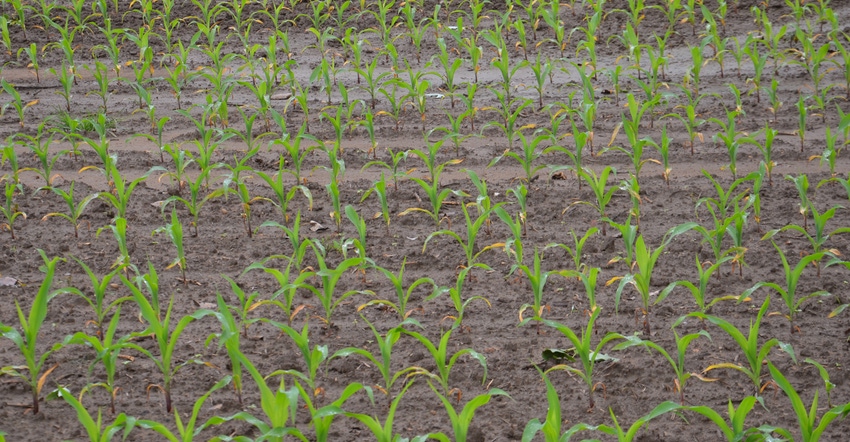
All your concerns about ponded or flooded corn don’t evaporate when the surface water leaves. If the soil stays saturated for an extended period, bad things can still happen. You could see some of the effects right away, but other impacts may not show up until later in the season.
“Some root death will occur, and new root growth will be stunted until the soil dries out to acceptable levels,” explains Bob Nielsen, Purdue University Extension corn specialist. “If the summer turns dry later, restricted root systems may impact those plants.”
Corn left standing after water recedes often takes on an orangish or yellowish appearance on lower leaves, he notes. “Nitrogen is rapidly remobilized from those lower leaves to upper, newer leaves coming out on corn plants,” Nielsen says. “Because the root system is affected and uses fewer products of photosynthesis once plants start growing again, higher concentrations of photosynthates may end up in the stems and leaves. That can produce a dramatic effect on those leaves when that happens.”
If saturation persists long enough and more roots die, plants won’t be able to take up as much water, he adds. Ironically, they may show signs of drought stress, including leaf rolling and wilting, even though the root cause was too much water in the soil.
Saturated soils can also easily lead to nitrogen loss. Whether you will need to add more depends on if plants show signs of recovering and demonstrate the ability to produce a reasonable crop.
“If corn dies in those ponded areas, it probably doesn’t matter how much nitrogen you’ve lost, as far as the corn is concerned,” Nielsen says.
Disease implications
Damaged root systems can predispose corn to root and stalk rots later, even if the field appears to recover. Monitor affected fields in August and September, and be aware that you may need to modify harvest strategies to harvest those fields before significant lodging occurs, Nielsen says.
Other diseases, perhaps less damaging to potential yield but still noteworthy, can be linked to ponding or flooding early in the season. Seedling blight caused by pythium fungi can take out corn seedlings in the V3 to V4 stage. If you find missing plants later in the season in those areas, that’s a possible cause. Seed carries fungicide treatments, but they are only effective for about three weeks. Delays caused by wet or cold soils can set up fields for this problem.
Both common smut and crazy top are opportunistic diseases caused by fungi. The fungus that causes crazy top requires saturated soils to infect seedlings. Symptoms won’t show up until later in the season. It rarely affects huge numbers of plants in any one area. The fungus that causes smut enters tissues damaged by floodwaters. There is limited hybrid resistance to either of these conditions.
Fields affected by flooding or ponding early may be more subject to wind damage later in the season. If green snap occurs below the ear, that plant is finished. Sometimes only a relatively small percentage of plants within a row may be affected.
Root lodging caused by storms is more likely if root systems were compromised early. Plants may be uprooted or left lying nearly flat to the ground. The older the plants when hit, the more likely there will be permanent damage.
About the Author(s)
You May Also Like




